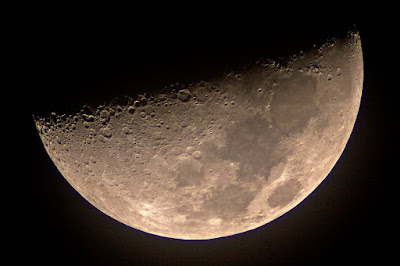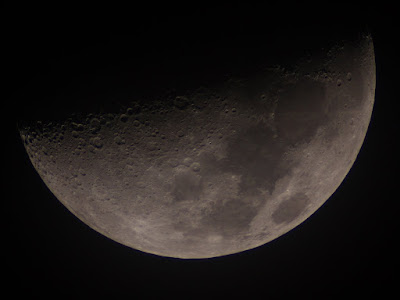.jpg) Palomar 4 is the Milky Way's second most distant globular cluster (the other is 10% further out, see here). It is 356,000 light years from the Sun and 364,000 light years from the center of the galaxy. For some perspective as to how far out that is, consider that the galaxy itself is only about 100,000 light years across. That means Palomar 4 is 3.5 times further from the Milky Way's center than the galaxy is wide. If the Milky Way is a frisbee ten inches wide, Palomar 4 is three feet away from its center! There are several other galaxies closer to the Milky Way than that.
Palomar 4 is the Milky Way's second most distant globular cluster (the other is 10% further out, see here). It is 356,000 light years from the Sun and 364,000 light years from the center of the galaxy. For some perspective as to how far out that is, consider that the galaxy itself is only about 100,000 light years across. That means Palomar 4 is 3.5 times further from the Milky Way's center than the galaxy is wide. If the Milky Way is a frisbee ten inches wide, Palomar 4 is three feet away from its center! There are several other galaxies closer to the Milky Way than that.At this great distance, only very bright stars show up as stars. Compare my results with this image taken from the Sloan Digital Sky Survey.
 These are the brightest stars in the cluster. Many more have been detected individually by professional astronomers that are much dimmer, down to magnitude 25 or 26. These stars in my image are further than any individual stars I have imaged before now. They are very dim. I could never see them with my eyes through the telescopes I have, but the camera catches much dimmer objects than my eyes ever could. Here is my image with magnitudes of the brighter stars filled in (mags provided by Sky-Map.org). Please click on the image for a readable view.
These are the brightest stars in the cluster. Many more have been detected individually by professional astronomers that are much dimmer, down to magnitude 25 or 26. These stars in my image are further than any individual stars I have imaged before now. They are very dim. I could never see them with my eyes through the telescopes I have, but the camera catches much dimmer objects than my eyes ever could. Here is my image with magnitudes of the brighter stars filled in (mags provided by Sky-Map.org). Please click on the image for a readable view..jpg) Palomar 4 is something someone with a really large telescope (i.e., 20") might try to see (as here). I feel fortunate that I can catch it from my backyard in my little 5.3" scope.
Palomar 4 is something someone with a really large telescope (i.e., 20") might try to see (as here). I feel fortunate that I can catch it from my backyard in my little 5.3" scope.This image is 87 minutes worth of 20" exposures taken with the Atik 16 through the Vixen R135S, unguided, processed in Nebulosity, Registax, and PSE7.
Update: NHAC member and accomplished astrophotographer Paul Downing also recently shot Palomar 4. I'm honored to show his image here at Polaris B:
 As you can see, Paul's image is as deep as the survey. And it has greater resolution than mine, and color. This image begins to show Palomar 4 as the globular that it is. Great! The image was taken with a Celestron C14 at f/7 on a Takahashi NJP. It is an L:R:G:B combination using an SBIG ST10-XME CCD camera - 4x5min exposures of each component, dark subtracted and stacked in MaxIm CCD and color combined in Photoshop. It was taken in southern Spain at 36d 51m 41s N; 3d 15m 28s W. More of Paul's work can be seen at http://www.paulandliz.org
As you can see, Paul's image is as deep as the survey. And it has greater resolution than mine, and color. This image begins to show Palomar 4 as the globular that it is. Great! The image was taken with a Celestron C14 at f/7 on a Takahashi NJP. It is an L:R:G:B combination using an SBIG ST10-XME CCD camera - 4x5min exposures of each component, dark subtracted and stacked in MaxIm CCD and color combined in Photoshop. It was taken in southern Spain at 36d 51m 41s N; 3d 15m 28s W. More of Paul's work can be seen at http://www.paulandliz.orgAnyone else?
.jpg)


.jpg)
-2.jpg)
-3.jpg)
-2.jpg)
.jpg)
SmallPSE7.jpg)

.JPG)
&PineTree.JPG)